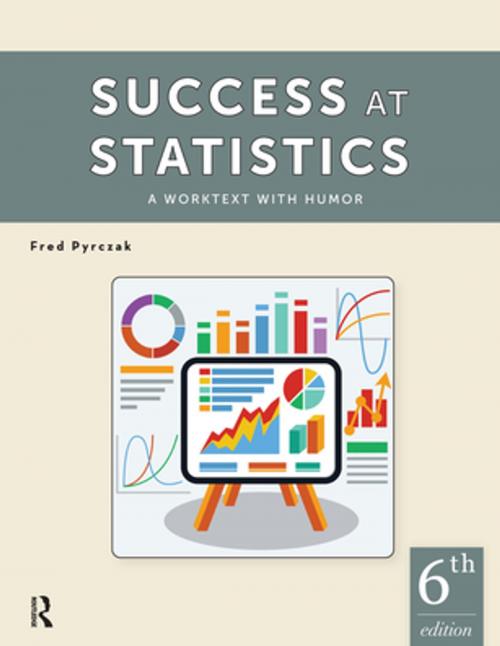| Author: | Fred Pyrczak | ISBN: | 9781351968058 |
| Publisher: | Taylor and Francis | Publication: | September 13, 2016 |
| Imprint: | Routledge | Language: | English |
| Author: | Fred Pyrczak |
| ISBN: | 9781351968058 |
| Publisher: | Taylor and Francis |
| Publication: | September 13, 2016 |
| Imprint: | Routledge |
| Language: | English |
• This comprehensive text covers all the traditional topics in a first-semester course.
• Divided into 67 short sections, this book makes the topics easy to digest. Students regularly get positive reinforcement as they check their mastery with exercises at the end of each section.
• Each exercise is based on a humorous riddle. If the answer to a riddle makes sense, students know all their answers for that exercise are correct. If not, they know they need to check their answers.
• Short sections make it easy to customize your course by assigning only those sections needed to fulfill your objectives.
• A comprehensive basic math review at the end of this book may be used to help students whose math skills are rusty.
• Thoroughly field-tested for student interest and comprehension. The short sections and humor-based, self-checking riddles are greatly appreciated by students.
• Contains Part D on effect size, which provides technical solutions to issues raised in Part C (such as the limitations of inferential statistics).
New to this edition:
Section 1: Explains the importance of statistical techniques in the advancement of scientific knowledge.
Section 11: Provides practice with the summation operation before using it in multiple statistical tests.
Section 27: This section on z-scores explains how to translate a percentile rank into a raw score.
Section 30: Underlines the importance of figural representations of data, explains how to identify the most appropriate figure, and discusses how to label figures effectively.
Section 41: Provides a deeper understanding of the relationship between p-values and critical values in a statistical test.
Appendix J: A summary table of all statistical equations and guidelines for choosing a particular statistical test.
Table 1: The format and discussion for the Table of the Normal Curve has been changed to a more conventional presentation of this statistical tool.
• This comprehensive text covers all the traditional topics in a first-semester course.
• Divided into 67 short sections, this book makes the topics easy to digest. Students regularly get positive reinforcement as they check their mastery with exercises at the end of each section.
• Each exercise is based on a humorous riddle. If the answer to a riddle makes sense, students know all their answers for that exercise are correct. If not, they know they need to check their answers.
• Short sections make it easy to customize your course by assigning only those sections needed to fulfill your objectives.
• A comprehensive basic math review at the end of this book may be used to help students whose math skills are rusty.
• Thoroughly field-tested for student interest and comprehension. The short sections and humor-based, self-checking riddles are greatly appreciated by students.
• Contains Part D on effect size, which provides technical solutions to issues raised in Part C (such as the limitations of inferential statistics).
New to this edition:
Section 1: Explains the importance of statistical techniques in the advancement of scientific knowledge.
Section 11: Provides practice with the summation operation before using it in multiple statistical tests.
Section 27: This section on z-scores explains how to translate a percentile rank into a raw score.
Section 30: Underlines the importance of figural representations of data, explains how to identify the most appropriate figure, and discusses how to label figures effectively.
Section 41: Provides a deeper understanding of the relationship between p-values and critical values in a statistical test.
Appendix J: A summary table of all statistical equations and guidelines for choosing a particular statistical test.
Table 1: The format and discussion for the Table of the Normal Curve has been changed to a more conventional presentation of this statistical tool.















